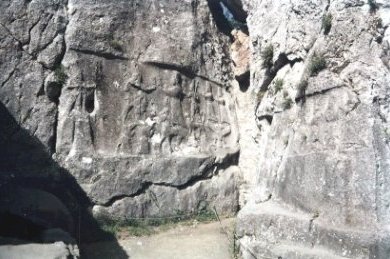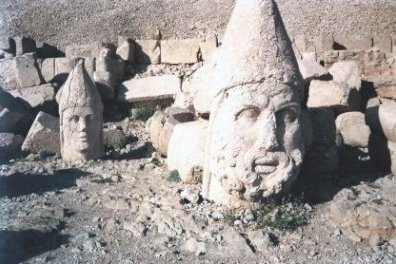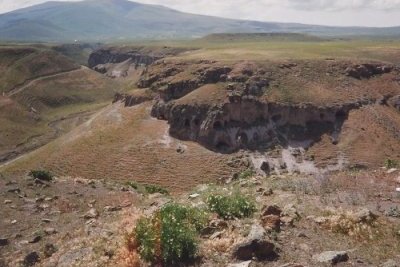
Hattusha only is an interesting place to visit when you know its history. The remains are really old, so not much is left. Also, the heat on this plain can be burning.
For more interesting examples of Hittite culture, visit the Anatolian Museum in Ankara.
Keep reading 0 comments
The most beautiful places always seem to be the most remote. Nemrut Dag is a good example for this theory. It is situated near the little town of Kahta, deep in the heart of Turkey.
From there you have to drive 1,5 hour by jeep through inhospitable surroundings. Finally a half hour-climb of the mountain itself awaits you, before you can see the magic sight with your own eyes.
Keep reading 0 comments
Considering the history between Turkey and Armenia, this is a controversial nomination. I won’t go into detail here about the current Turkish political scene and its complicated opinions on what happened in 1915. But behind the scenes, the acceptance of Ani as an important part of the heritage of this region has been in the making for almost 20 years. The site finally entered Turkey’s Tentative List in 2012.
I visited Ani way back in 1992, during a 3-week-long group tour that took us all over Turkey by bus. I don’t remember much about Ani, only the remoteness (and exoticness!) of the whole of eastern Turkey is a clear memory. Ani itself for me is symbolized by that one ruined church and the deep gorge next to it that divides the two countries.
Since then quite a lot seems to have changed. While looking for additional photos to accompany this post I noticed all kinds of buildings that I do not remember from 1992, some including interior murals. The website Virtual Ani covers all of them. Recent visitors confirm that it still is an off-the-beaten-track destination though. Minor Sights describes his visit in 2012 as a lonely experience and helpfully suggests "Don't mention the war!" A Tripadvisor report from June 2015 hints at the very vast size of the site, the need to bring plenty of drinking water, and the entrance fee of 8 Turkish Lira.
Keep reading 0 comments
I stayed for 4 weeks in Salamanca, and like most people, I did a Spanish course there. Classes were in the evening (16.30-20.30), so you had all day off.
Most remarkable though were the (long) evenings and nights: late-night dinner around 11 pm, and the rest of the night on the fabulous Plaza Mayor.
Keep reading 0 comments